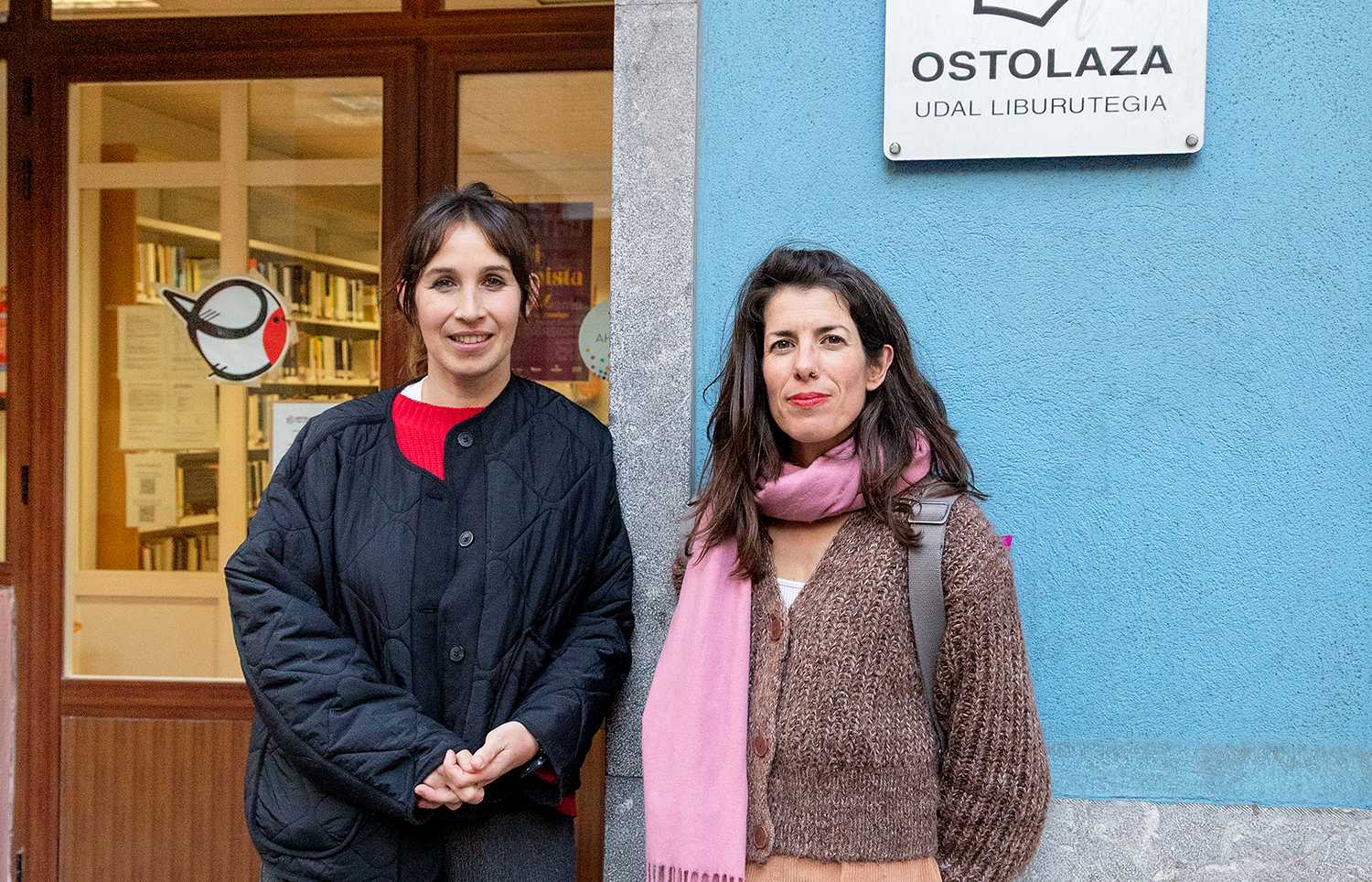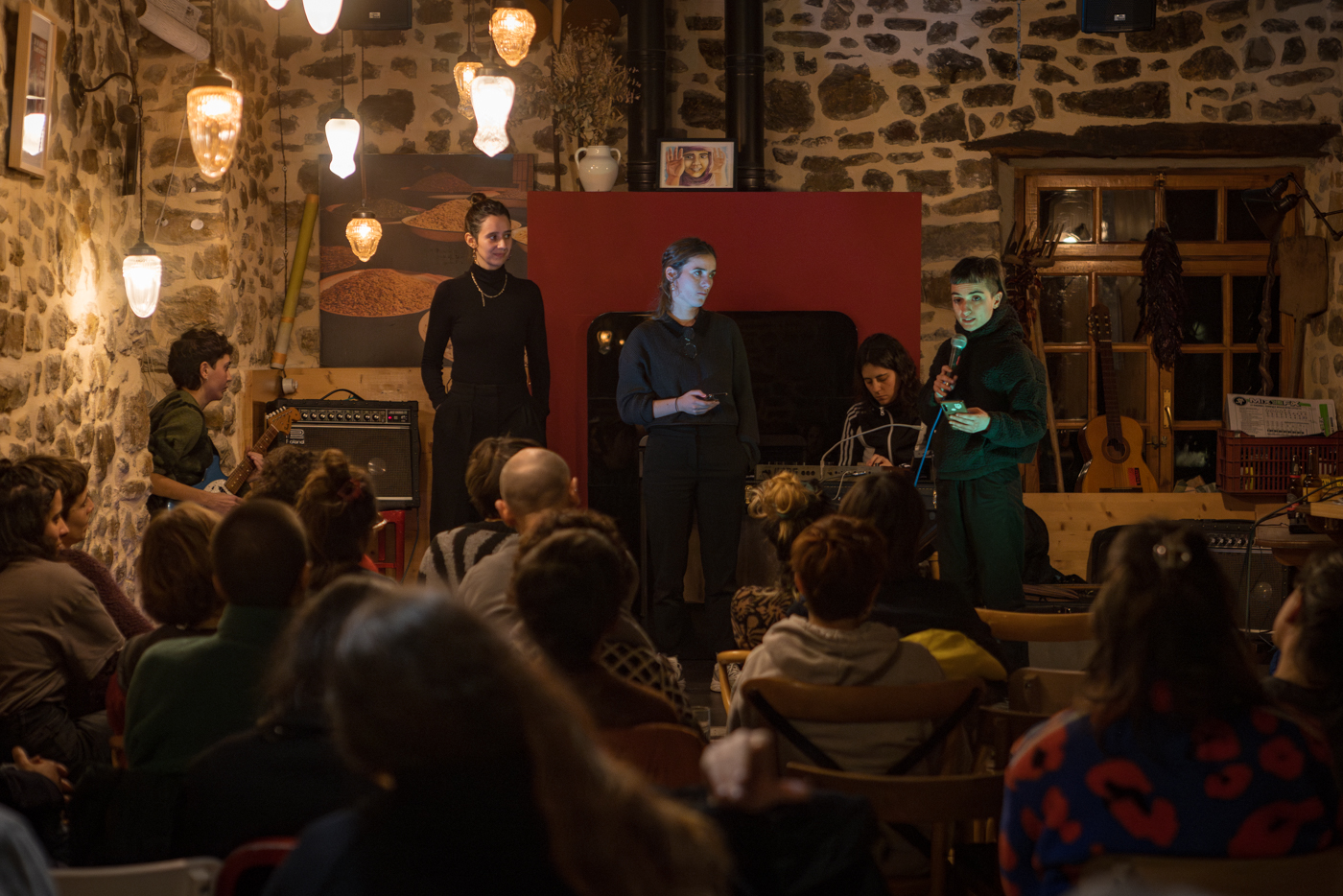Seven horses with code
- It has not always been sweet to return to Euskal Herria with a woman or a foreign man. Many times the prize exile, and just a tragedy. Many corpses are found in the field of Basque songs, blood, fear and epic death. The acoustic group Hiru Truku – Ruper Ordorika, Joseba Tapia, Bixente Martinez – launched in 1994 a modern version of the Anderea ballad in France, which is part of that model.

In 1933, Manuel Lekuona received the congregation of the title The Lady of France in the Undurraga de Zeanuri, in the Caserío Undurraga de Zeanuri: sixteen Coplas, rows in the lesser zortziko, live. The dense and troubled density of the text makes us tickle when we read it. Bertsolari Juan Dorronsoro collected in Ataun a version of the song, in Biscayan, transplanted. According to Antonio Zavala, in 1998 a marriage of Zeanuri came to Ataun, and of his sons this beautiful obra.Es was achieved, surprising to see, whatever the dialect, what
deep songs are drawn into the collective memory of the Basques. The daughters of Ezpeldoi, Sister Juana de Urtsu, the widow of Musde Irigarai and the young Andere of France marked the spirits and thus passed from generation to generation, despite the small changes. They talked about the beginning of the crowd, of the heart, of the brain, of the dream, of a universal feeling in us.
We still like it. As our society has been transformed into the image, we emphasize the cinematic organization or adaptation of the stories of these old coplas: if there are conversations, how the interlocutors are planted in space, the instruments of murder appear and in the background, as in the pastoral ones, the crime is carried out visually, while the main character mimics the murderer until he gives the last encouragement. Using the metaphor of reptiles, the Lady of France mimics lizards and snakes on her mother-in-law's bed:
Oh, my mother-in-law with
a sweet
snack heart who hasn't
had rats.
Let's smell the Renaissance atmosphere in this great poem. It seems that we are in the 15th or 16th centuries, promoting wars among themselves, when the conqueror kings combated with violence and ferocity the states we now know:
When I arrived
from France, I
found my sad mother in the suite.Los Navarros, the Biscayan and the third children of the families of
Iparralde
put themselves at the service of these kings as mercenaries who dreamed of money and adventures. The movement developed at the borders between Zuberoa and Biarno in the time of Richelieu (1585-1642) focuses on the brilliant characters D’Artagnan, Aramits, Porthos and Athos.El young man who returned from France, perhaps, was part of a band of warriors who, after
hours of peace, had no choice but to return home with her husband. He could come down from a noble house on the side of Arratia, his mother's favorite son, subject to her. The mother is sad in suicide: her son's dictionary is partly reminiscent of the richest circle, which perhaps calls her the suite, the kitchen or the lobby of that humble, cold family palace. When we walk through Bizkaia, we can admire the fortified houses and immediately slip into the minds to invent facts sangrientos.En
the next eight coplas develops a colloquium between mother and child, short, tragic sentences. There we learn that his son comes from abroad married to his wife, Juanita, of French courtship. My mother does not want a French woman for her son, let alone a daughter-in-law from the same source:
– I do not want
to speak so little French
– I have it tomorrow with
the word I said.
“With the same
word you said,
tomorrow you have
to kill yourself. The
mother condemns: the son must kill the woman he brings from the outside. The son, however, is in love, truly glued to Juanita, and does not readily accept the verdict of his mother. Try to negotiate with your old home, with black clothes, without success:It is so nice
that my
wife is not
possible for my mother
to feel it.
The son doesn't run away. The problem here is caused by exogamic marriages, which Euskal Herria, at that time, is in the hands of Spain in the South and of French power in the North. In these songs, the issue of geographic origin is more serious than that of social levels, since these spouses, in the majority, were small aristocrats.
The precept of the mother is the real order: Juanita will have to die, forzosamente.Si the son is too cowardly to carry out this action, he can ask for help from his brother, who is a student:
Don’t be glad
that anajia is possible, it’s
an
anage joven.Podemos to conceive your son’s sadness by asking his beautiful woman to ease off the horse, letting him know frankly that he intended to plunge the stab into the heart:
You have fallen Juanita in the
middle of the
hearts this point that I have slipped you over
the horses.
I could see the aim of
that Ay's
stab and my heart was
put to death.
On the other hand, Juanita is lost in the steps of her husband’s repellency, which runs out of money. He speaks of the fear of death and lists all the material riches of the dowry he has received from his family:
Seven horses in sequin
suit, the
eighth one wrapped
in pearls.
In addition, decoction
warm
gold and
over pelizia.
With the same spear it would have been enough to
keep the Istians alive.
Juanita will fight until the last moment. It offers you horses with canvases and pearls, golden lanes and cattle leather tents in exchange for you to stop living. Juana, from Urtsue's song, talking to her brother the priest, also tried to save theirs. Also, the girl at the Ozaze Palace, on the eve of her transfer to Spain, held the selling mother responsible for her death. So, as in our days, a woman's prayer might look like a magnet's.
The son was already under the influence of his mother. We can imagine the mother putting the fire of death on the side of the couple, feeling greed and hatred in their roars.
She for me,
but not the closure with vida.El
stab is an instrument of killing the old Basque rafts. It was easy to hold and use firmly on the wrist. The target did not fail and was directed directly to the heart, where the sharp pointer of the convenient sword was found. The gentlemen kept them in the shoes, ready to take advantage of any eventuality. In this case, her husband, the son of that severe mother, gave no choice to Juanita.En the three cocks of the rest of Zeanuri's Eresia we heard
Juanita in person, who describes his death: he perceives the bells of agony, sees the stained sheets of blood or the canvases and has time to curse his mother-in-law before he died:
I hear a bell,
I don't know
where it can be
agonizing.
My eighteenth goes to seven
swarms of blood
and this eighth drags me
from the world. In
conclusion, as has already been said, he compares the mother-in-law lizards and snakes to show that it is nothing more than a rachitic and evil reptile that captures the power of the family. With this imaginary, Juanita is situated in a Renaissance tradition contrasted by Caravaggio in the Marmoka table: a cut head, besieged by snakes…
In the lands of Arratia another variant of the Lady of France is sung. In this paper, by influence of the mother, in addition to the children, the cure of the people joins the action to execute the murder of Juana or Juanita. In these times, uniting the church and the family, a whole social structure joins together to communicate exogamia from the root and forcefully: love does not have importancia.El the first blow given by the husbands was
immediately
followed by the priest of cognac.
– Oh the sharp tip of the cannabite!
She's often taken my mother's heart.
Another variant of Arratia
that Jon Juaristi took from the mouth of an elderly woman in the 1980s:
- Goodbye, goodbye, my mother!
- Welcome be my son!
Has your child been married or
single?
“My mother is married.
– Do you have a Frantsa or Spanish woman?
– Totally noble than French.
– Morura in war and has to die,
I want to see the French kingdoms.
I dragged myself
to the priest and to the
brother, who said, like my mother, that I would
die and that I would kill him.
I went home to my
sister and the youngest, who told me that I
would love
her again as it was tomorrow.
He liked it as a cognate.
– Andría, acertijo, ride on frog horses and muerte.Las Andrias have come from here and there
without my sister Juana apareciera.El husband gave the first blow The priest of cognac Bereala, on the one hand, and on the other – Oh,
sharp spike of the cannaba!
He often took my mother's heart.
Astelehen honetan hasita, astebetez, Jon Miranderen obra izango dute aztergai: besteren artean, Mirande nor zen argitzeaz eta errepasatzeaz gain, bere figurarekin zer egin hausnartuko dute, polemikoak baitira bere hainbat adierazpen eta testu.
Martxoaren 17an hasi eta hila bukatu bitartean, Literatura Plazara jaialdia egingo da Oiartzunen. Hirugarren urtez antolatu du egitasmoa 1545 argitaletxeak, bigarrenez bi asteko formatuan. "Literaturak plaza hartzea nahi dugu, partekatzen dugun zaletasuna ageri-agerian... [+]
1984an ‘Bizitza Nola Badoan’ lehen poema liburua (Maiatz) argitaratu zuenetik hainbat poema-liburu, narrazio eta eleberri argitaratu ditu Itxaro Borda idazleak. 2024an argitaratu zuen azken lana, ‘Itzalen tektonika’ (SUSA), eta egunero zutabea idazten du... [+]




















ilbeltza-(1).jpg)